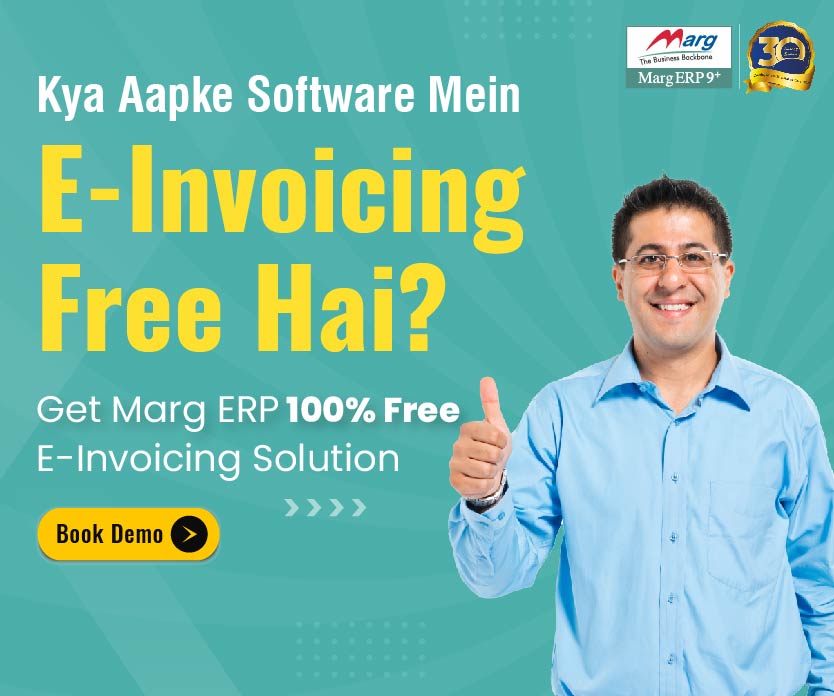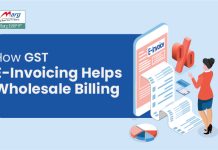Recent Updates on e-Invoicing:
10th May 2023
The CBIC has recently declared the implementation of the 6th phase of e-invoicing, which is in line with the government’s efforts to encourage a paper-free GST system. This initiative aims to decrease compliance costs for businesses and enhance the effectiveness of the GST system. Starting from August 1st, 2023, companies with an annual turnover of ?5 crore or more since 2017-18 will be required to generate e-invoices.
Electronic invoicing, or e-invoicing, is the process of sending and receiving invoices electronically rather than through traditional paper-based methods. E-invoicing offers many benefits, including reduced costs, increased efficiency, improved accuracy, and faster payment processing. However, to ensure the success of e-invoicing, it’s essential to follow certain guidelines.
Here are some e-invoicing guidelines to help you get started:
- Understand the legal requirements: Before implementing e-invoicing, it’s crucial to understand the legal requirements in your country or region. Different countries have different regulations regarding e-invoicing, including requirements for data retention, format, and authentication. Make sure you’re familiar with the applicable regulations to avoid any legal issues.
- Choose the right format: E-invoicing can be done in various formats, including PDF, XML, and EDI. Choose a format that is compatible with your accounting software and the software used by your customers. Additionally, make sure the format complies with the legal requirements in your country.
- Use a secure system: E-invoicing involves sensitive financial information, so it’s crucial to use a secure system. Choose a system that offers encryption, password protection, and other security features to protect your data.
- Include all necessary information: Make sure your e-invoices include all the necessary information, including the date, invoice number, description of goods or services, quantity, price, and total amount due. Incomplete or inaccurate invoices can cause delays in payment processing and create confusion for your customers.
- Ensure accuracy: E-invoicing can be automated, but it’s essential to double-check the information to ensure accuracy. Make sure the invoice details match the purchase order and other related documents. Additionally, verify that the invoice complies with the legal requirements in your country.
- Provide customer support: Make sure your customers are familiar with e-invoicing and how to use it. Provide customer support to help them understand the process, troubleshoot any issues, and answer any questions they may have.
- Monitor and track: E-invoicing allows for real-time monitoring and tracking of invoices, so you can quickly identify any issues or delays. Make sure you regularly check your e-invoicing system and follow up with customers if necessary.
As mentioned earlier, e-invoicing is a method of sending and receiving invoices electronically, eliminating the need for paper-based invoices. This can be done in various formats, including PDF, XML, and EDI. In addition to saving costs and improving efficiency, e-invoicing also reduces the environmental impact of paper-based invoicing.
Many countries around the world have started adopting e-invoicing as a standard practice. For instance, the European Union has implemented a standard for e-invoicing that all public administrations must follow. Similarly, India has mandated e-invoicing for businesses with an annual turnover of over INR 500 crores (approximately $67 million).
Apart from legal requirements, there are several other factors to consider when implementing e-invoicing. One of the most critical factors is data security. E-invoicing involves sensitive financial information, and it’s essential to protect this information from unauthorized access. This can be achieved by using secure systems that offer encryption, password protection, and other security features.
Another important factor is data accuracy. Inaccurate invoices can cause delays in payment processing and create confusion for both the invoicer and the recipient. Therefore, it’s crucial to double-check the information before sending an e-invoice to ensure that all the necessary details are included and accurate.
E-invoicing can also be integrated with other financial systems, such as accounting software and payment gateways, to create a seamless invoicing and payment process. This can improve efficiency and reduce errors as the data is automatically updated across all systems.
Furthermore, e-invoicing allows for real-time monitoring and tracking of invoices, providing greater visibility into the invoicing and payment process. This can help businesses identify issues and delays early on and take corrective action to avoid any potential problems.
Finally, it’s important to provide customer support to help customers understand the e-invoicing process and address any issues they may encounter. This can help reduce customer frustration and improve the overall experience.
Free Download E-invoicing Software
In conclusion
E-invoicing is a powerful tool that can help businesses save costs, improve efficiency, and reduce environmental impact. However, to ensure success, businesses must follow e-invoicing guidelines, including understanding legal requirements, choosing the right format, using secure systems, including all necessary information, ensuring accuracy, providing customer support, and monitoring and tracking invoices. By doing so, businesses can enjoy the many benefits of e-invoicing while avoiding potential pitfalls.
Other Related Blogs: Section 144B Income Tax Act
Frequently Asked Questions (FAQs)
Q:1 What is e-invoicing?
A: E-invoicing is the process of sending and receiving invoices electronically rather than through traditional paper-based methods.
Q:2 What are the benefits of e-invoicing?
A: E-invoicing offers many benefits, including reduced costs, increased efficiency, improved accuracy, and faster payment processing.
Q:3 What are the legal requirements for e-invoicing?
A: Different countries have different regulations regarding e-invoicing, including requirements for data retention, format, and authentication. It’s crucial to understand the legal requirements in your country or region before implementing e-invoicing.
Q:4 What format should I choose for e-invoicing?
A: E-invoicing can be done in various formats, including PDF, XML, and EDI. Choose a format that is compatible with your accounting software and the software used by your customers. Additionally, make sure the format complies with the legal requirements in your country.
Q:5 How do I ensure the security of my e-invoicing system?
A: Use a secure system that offers encryption, password protection, and other security features to protect your data.
Q:6 What information should I include in my e-invoices?
A: Make sure your e-invoices include all the necessary information, including the date, invoice number, description of goods or services, quantity, price, and total amount due.
Q:7 How do I ensure the accuracy of my e-invoices?
A: Double-check the information to ensure accuracy. Make sure the invoice details match the purchase order and other related documents. Additionally, verify that the invoice complies with the legal requirements in your country.
Q:8 What should I do if my customers are not familiar with e-invoicing?
A: Provide customer support to help them understand the process, troubleshoot any issues, and answer any questions they may have.
Q:9 How do I monitor and track my e-invoices?
A: E-invoicing allows for real-time monitoring and tracking of invoices, so you can quickly identify any issues or delays. Make sure you regularly check your e-invoicing system and follow up with customers if necessary.
Q:10 Can e-invoicing be integrated with other financial systems?
A: Yes, e-invoicing can be integrated with other financial systems, such as accounting software and payment gateways, to create a seamless invoicing and payment process.
Q:11 What are the best practices for e-invoicing?
A: Best practices for e-invoicing include understanding legal requirements, choosing the right format, using secure systems, including all necessary information, ensuring accuracy, providing customer support, and monitoring and tracking invoices.






